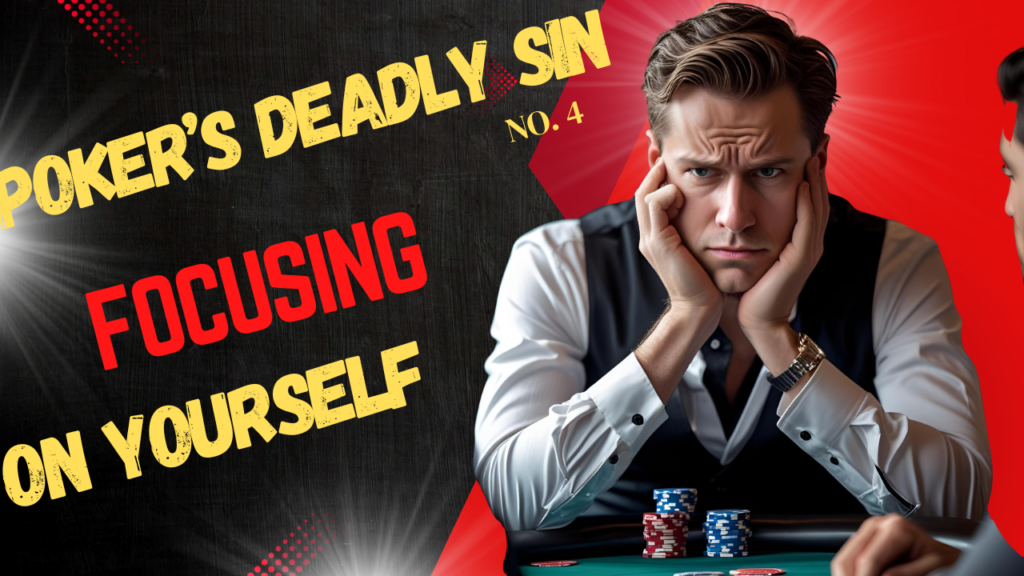RIGIDITY: THE DOUBLE-EDGED SWORD OF POKER
DEADLY SIN NO. 7 - THE PARADOX OF RIGIDITY
In poker, rigidity means falling back on autopilot — the same routines, the same bet sizes, the same plays no matter the situation. At its worst, it makes you predictable, easy to read, and easy to exploit. But here’s the twist: rigidity isn’t always bad. In fact, it can be a strength — until it turns into a trap.

STRENGTH
WEAKNESS
Rigidity gives you structure. It keeps you grounded in your process, following the decision tree instead of being swayed by chaos or emotion.
When discipline hardens into blind discipline, you stop adapting. You stop paying attention. What was once your anchor becomes your prison.
Anchor question: Are you playing poker with awareness… or are you just playing your pattern?
WHY PLAYERS FALL INTO RIGIDITY (pSHCYOLOGICAL HOOKS)
Poker is a game of constant change — but the human brain craves routine. That’s where rigidity sneaks in.
FEAR OF BEING WRONG
COMFORT ZONES
EGO AND IDENTITY
LAZINESS & COGNITIVE SHORTCUTS
Many players would rather stick to a safe, predictable script than risk embarrassment or second-guessing themselves. By following the same lines over and over, they avoid the sting of “looking foolish,” even if it costs them money.
Rigidity feels safe. If a certain bet-sizing, hand range, or reaction worked in the past, players cling to it — even when the table dynamic has completely shifted.
“This is my style.” For some, poker strategy becomes part of their identity. A TAG insists they are always tight and aggressive; a LAG insists they must keep firing. Once ego gets involved, flexibility feels like weakness.
Real-time thinking is hard work. It’s easier to recycle an old pattern than actively analyze a fresh situation. Rigidity, then, is the brain’s way of saving energy — but at a steep cost.
Rigidity is like driving with cruise control. It’s smooth and comfortable when the road is straight, but the second a sharp curve appears, you’re in danger.
THE DANGERS OF RIGIDITY IN POKER
If there’s one constant in poker, it’s change. New players sit down, others leave, stack sizes shift, table dynamics evolve. A rigid player — locked into the same routine no matter what — simply cannot keep up.
PREDICTABILITY
FAILURE TO ADAPT
RIGHT BET SIZING
MISSED OPPORTUNITIES
Rigidity in poker makes you easy to read. Same lines, same bets, same timing — opponents don’t have to guess what you’re holding.
The game flips on its head when a tight player leaves and a maniac sits down. But if you keep playing the same range and the same lines, you’re playing the old game, not the one in front of you.
Always betting half-pot or always checking missed flops turns into a neon sign for your hand strength. Sharp opponents pick this up instantly.
A rigid player fails to punish loose gamblers, ignores the chance to exploit weak-tight opponents, and misses the chance to profit when dynamics shift.
THE HIDDEN POSITIVES OF RIGIDITY
Rigidity in poker isn’t always a curse. Like impatience, when channeled correctly, it can actually serve as a virtue. The problem isn’t rigidity itself — it’s failing to recognize when discipline hardens into inflexibility.
DISCIPLINE UNDER PRESSURE
CONSISTENCY IN FUNDAMENTALS
IMMUNITY TO MANIPULATION
MINDFULNESS
Following a structured decision tree can protect you from tilt, emotion, or distraction. A rigid process keeps you grounded when chaos breaks out around you.
Having a routine for hand selection, preflop sizing, and bankroll management prevents reckless deviations. It’s the foundation of long-term winning.
A player who has a disciplined framework is harder to rattle with table talk, flashy bluffs, or pressure bets. Rigidity here translates into resilience.
In the same way meditation uses repetition to anchor awareness, a rigid poker process can anchor you to patience and logic — as long as you remain alert to context.
But here’s the trap: Rigidity can lead to blind discipline. If you follow your routine without awareness of changing conditions, the very structure that once protected you now suffocates you.
STRIKING THE BALANCE: RIGIDITY VS. FLEXIBILITY
The real art of poker isn’t choosing between rigidity or flexibility — it’s learning when each one serves you best. Rigidity provides the structure; flexibility provides the edge. Without structure, you drift. Without adaptability, you drown.
PLAYER TYPE
BOARD TEXTURE
STACK DEPTH & GAME FLOW
Adjust your lines based on who’s in the hand. What works against a nit won’t work against a maniac, and rigidly sticking to “my style” blinds you to opportunities.
A one-size-fits-all c-bet approach collapses when you face coordinated, wet boards. Flexibility means asking: Does my story make sense here?
Rigidity ignores context. Flexibility recognizes that deep stacks encourage implied odds plays, while short stacks force tighter decisions.
IMPATIENCE VS PATIENCE
Like impatience, rigidity isn’t inherently evil. Impatience can drive growth when applied to study and improvement; rigidity can protect you from tilt and sloppy decision-making. But when either crosses the line — impatience at the table, rigidity against a maniac — it shifts from asset to liability.
Be rigid in your process, flexible in your execution. Structure should anchor you, but adaptability should steer you.
CONCLUSION
Rigidity in poker is a double-edged sword. On one side, it gives you structure, discipline, and a process you can trust. On the other, it can lock you into autopilot, making you predictable, exploitable, and blind to opportunity. The best players don’t reject rigidity — they harness it as a foundation and then build flexibility on top of it.
Ask yourself: Am I playing poker… or just playing my pattern? The difference between the two could be the difference between stagnation and growth.


